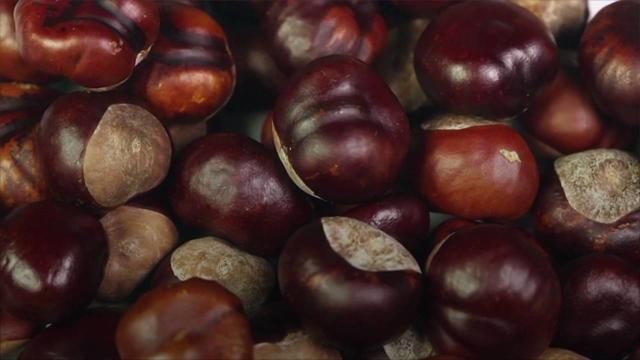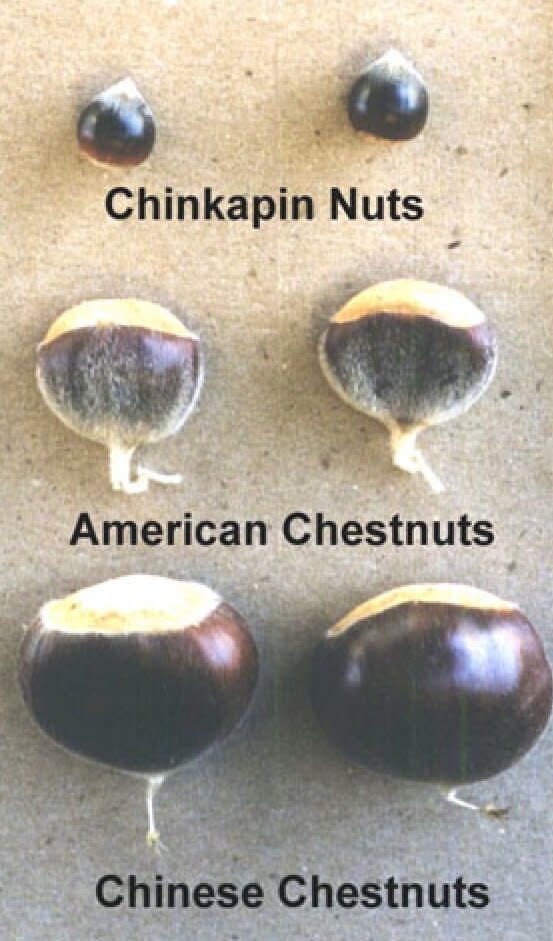Have You Ever Heard of a Chinquapin?

"A chinka-what?" I asked my grandparents, as they told me about this surprising and funny little nut that's widespread from Maryland down to Texas.
My grandparents explained that they grew up enjoying this uncommon snack from the trees on their family farms. Apparently, it can even be baked into a pie. Such intrigue!

Paul Sisco
The chinquapin, or chinkapin, is a sister species to the American chestnut. It grows in a hard, spikey burr on a squatty tree that looks similar to the American chestnut tree.
The first English recording of the chinquapin was from Captain John Smith in approximately 1607 when he came in contact with the Powhatan confederacy, Taylor Perkins, a research associate at University of Tennessee at Chattanooga, says. The original name "chechinquamin" (which evolved over time from pronunciation) meant mini berry or fruit in the Powhatan language.
Although it's unclear when the American chestnut and the chinquapin split from each other genetically, there were fossilized chestnut-like species found in Tennessee that date somewhere between 48 and 58 million years old, Perkins says.
Talk about a plant with history!
Although the chinquapin and the American chestnut are in the same family, they are quite different once you learn to recognize each. Here are the three distinguishing characteristics to learn so you're not fooled by these nut-bearing trees.
Unlike its sister tree, the American chestnut, a chinquapin tree will only grow to about 30 feet in height and will be multi-stemmed like a wide brush, Perkins says. The second important feature of a chinquapin is the hairy underside of its leaves. You can feel the soft, starfish-shaped trichomes on a chinquapin leaf with your hand. In comparison, an American chestnut's leaves are smooth.
Lastly, if you crack open a burr on a chinquapin, you'll only find one nut inside, whereas an American chestnut will have three nuts per burr.

Paul Sisco
There are three varieties of chinquapin trees, Paul Sisco, a member of The American Chestnut Foundation, says. Allegheny chinquapins are the trees that you'll find from Maryland down to Texas. Ozark and Alabama chinquapins are less hairy on the underside of their leaves, than the Allegheny chinquapins. You can find both Ozark and Allegheny chinquapins in Arkansas.
Once you know how to identify this mysterious tree, the next complication is actually finding one, Perkins says. Although they were at one point widespread in Eastern North America, nowadays, the most likely way to enjoy these nuts is if you're lucky enough to spot a chinquapin tree while hiking in the mountains.
They're most common in the Piedmont regions of Georgia and South Carolina, the mountains of Western North Carolina, and Southwest Virginia.
Perkins suggests that if you do find a healthy, nut-bearing chinquapin that you use thick leather gloves to pull the burrs off the tree and break them open to reveal the nut inside. Alternatively, you can use a thick soled hiking boot, to stomp on the burr and break it open.
Unfortunately, you won't find this covert Southern delicacy for sale in any supermarkets. Although that was possible at one time, especially near University of North Carolina at Chapel Hill.
If you're interested to see what this nut is all about, there are some nurseries that sell chinquapin trees. Perkins says they're great potted plants and can be low maintenance, although they do suffer from chestnut blight and root rot.
With a chinquapin tree in your yard, you'll have easy access to the sweet nuts. Just replace a chinquapin nut in any chestnut recipe you have, and you're all set to enjoy chinquapin baked goods.
If you do ever find a chinquapin tree while hiking, or already have one in your backyard, be sure to tag us @southernlivingmag on Instagram!